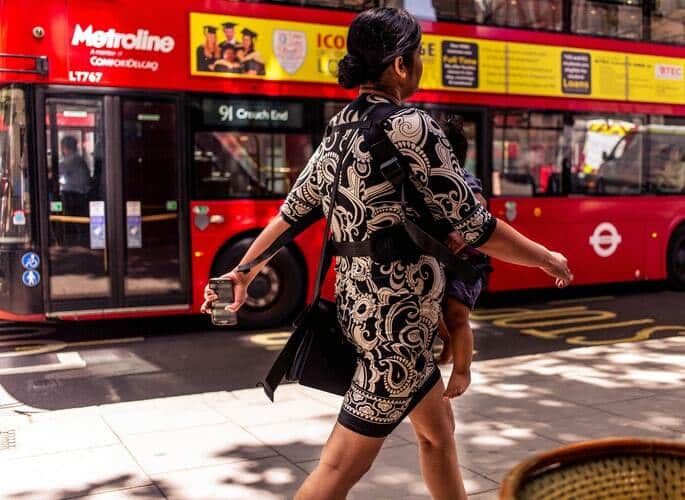For many women, public transportation plays an important role in maintaining an independent lifestyle. Less likely to own a car in many parts of the world, women also drive less frequently than men and are thus more reliant on other means of transport.
Yet in the past, transport planners have neglected to consider the very different ways that women utilize public transit. While short-distance and walkable cities would greatly benefit women who use public transit for work commutes, running errands or organizing childcare, enhancing first and last mile connectivity can expand upon existing public transit networks in a way that ensures a seamless travel experience and user loyalty.
Safety first
Easy access to public transit options can broaden a person’s travel radius and getting to and from the train or bus stop may be one of the most influential parts of a journey. The choice as to whether to use a public transport service is often made based on time, comfort, and access1. For many women in urban areas, though, the big concern is one for their safety2: on the way to and from public transportation stops or stations, while waiting and while in transit3.
As Sonal Shah, founder of The Urban Catalysts and Executive Director of the Centre for Sustainable and Equitable Cities, pointed out in the TUMI Talking Transport Transformation podcast, women aged 18 to 34 often report experiencing sexual harassment while using public transit. Though Shah spoke specifically about densely populated cities across India, the question of safety is one that is on the minds of women around the world, from London to Pretoria to Mumbai, and is, according to a study undertaken by researchers from the University of Utah and Nanjing Forestry University, the area most in need of improvement.
Closing the first and last mile gap
First and last mile connectivity solutions may work to address this issue. As women make their decisions about when and how to travel with safety in mind, one of the more limiting factors that comes up stems from the door-to-door principle. If a woman chooses to use public transport for a longer journey, how will she get to and from the station?
In India for example, the predominant mode of transport to and from the tram or bus stop is walking, which limits a person’s range if the destination is quite far from the nearest train stop. A lack of safe cycling infrastructure would likewise narrow options. Concerns about harassment or safety at night may lead a woman to only undertake the journey during daylight.
Cities therefore need to work to close the gap in mobility solutions for women, making access to public transport services equal for all. Beyond focusing the journey solely on the main mode of transportation, city planners can provide ease of mind for those concerned about safety by giving attention to the commute to the origin and destination stations themselves – the first and last mile. Expanding first and last mile connectivity options, for example through the use of microtransit options like shuttle buses, or bike sharing is one key transformation element to a safe and equal transit system!
Bhubaneswar, India, presents an exemplary approach. The local transport company has installed e-rickshaws that provide first and last mile connectivity. Besides providing safe and reliable last-mile transit to the city’s residents, the city is empowering women and transgender people by training them to conduct the e-rickshaws.
Time for other cities make first- and last-mile connectivity a priority!
[1] Venter, C. (2020): Measuring the quality of the first/last mile connection to public transport. In: Research in Transportation Economics, 83, 100949. DOI: 10.1016/j.retrec.2020.100949.
[2] Ratho, A. & Jain, S. (2021): Women on the Move. The Impact of Safety Concerns on Women’s Mobility. URL: Women on the move: The Impact of Safety Concerns on Women’s Mobility | ORF (orfonline.org).
[3] Allen, H., Pereya, L., Sagaris, L. & Cadenas, G. (2017): Ella se mueve segura – She moves safely. A Study on Women’s Personal Security and Public Transport in Three Latin American Cities. FIA FOUNDATION RESEARCH SERIES, PAPER 10. URL: Ella se mueve segura – She moves safely – WomenMobilizeWomen.
Further resources:
Fan, A., Chen, X. & Wan, T. (2019): How Have Travelers Changed Mode Choices for First/Last Mile Trips after the Introduction of Bicycle-Sharing Systems: An Empirical Study in Beijing, China. In: Journal of Advanced Transportation, 5426080. DOI: https://doi.org/10.1155/2019/5426080.
GIZ (= Deutsche Gesellschaft für International Zusammenarbeit) (ed.) (n.d.): Gender Sensitive Reforms in Public Transport. A Case of Kerala. URL: Gender sensitive reform in Kerala – WomenMobilizeWomen (Retrieved on 17.01.22).
Ji, Y., Fan, Y., Ermagun, A., Cao, X., Wang, W. & Das, K. (2017): Public bicycle as a feeder mode to rail transit in China: The role of gender, age, income, trip purpose, and bicycle theft experience. In: International Journal of Sustainable Transportation, 11(4). DOI: 10.1080/15568318.2016.1253802.
Shah, S., Viswanath, K., Vyas S. & Gadepalli, S. (2017): Women and Transport in Indian Cities, ITDP and Safetipin, New Delhi. URL: Women and Transport in Indian cities – WomenMobilizeWomen.
Shah, S. & Raman, A. (2019): What Do Women And Girls Want From Urban Mobility Systems? A Study by Ola Mobility Institute. URL: Media Centre (olacabs.com) (Retrieved on 17.01.22).
